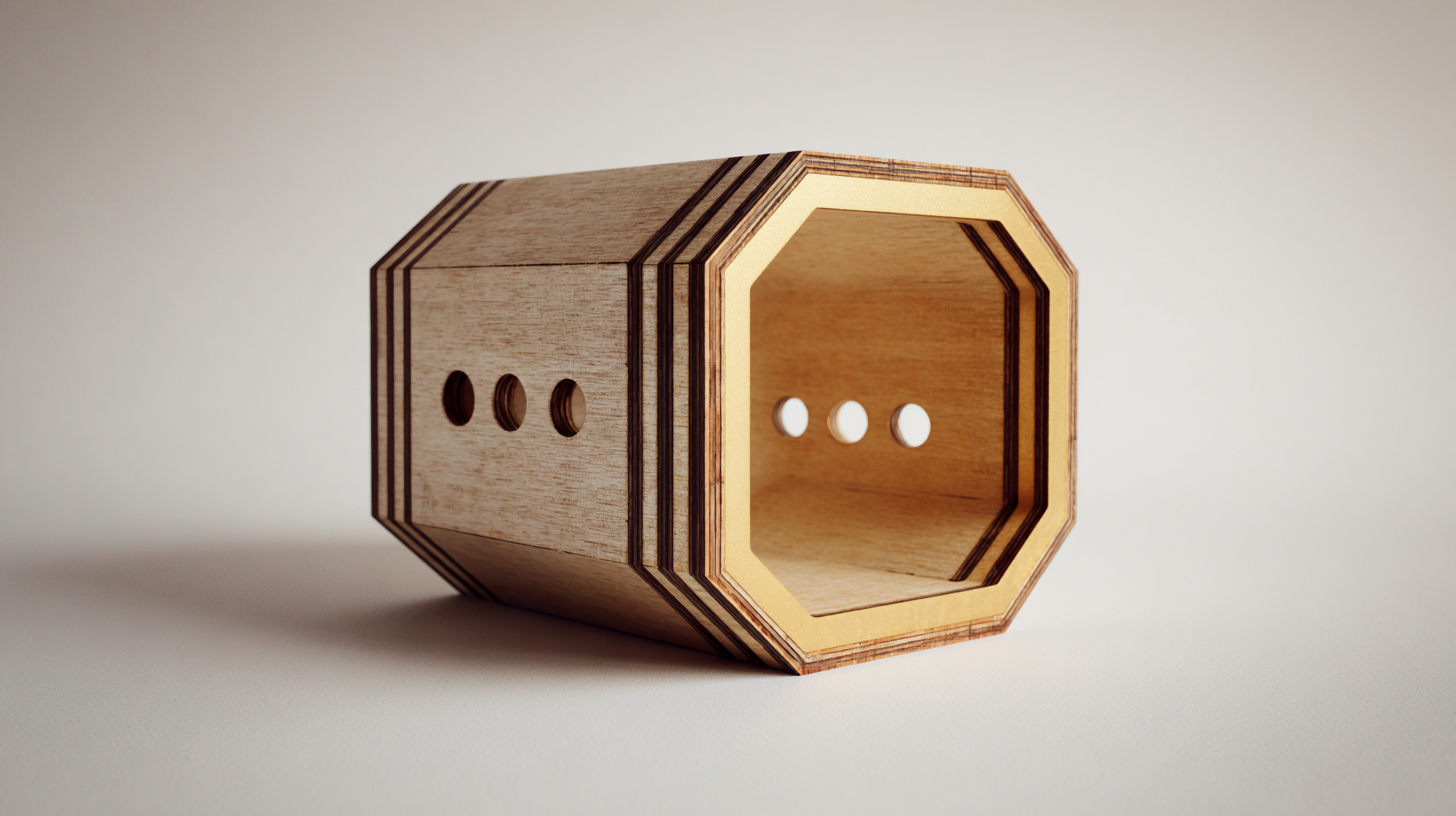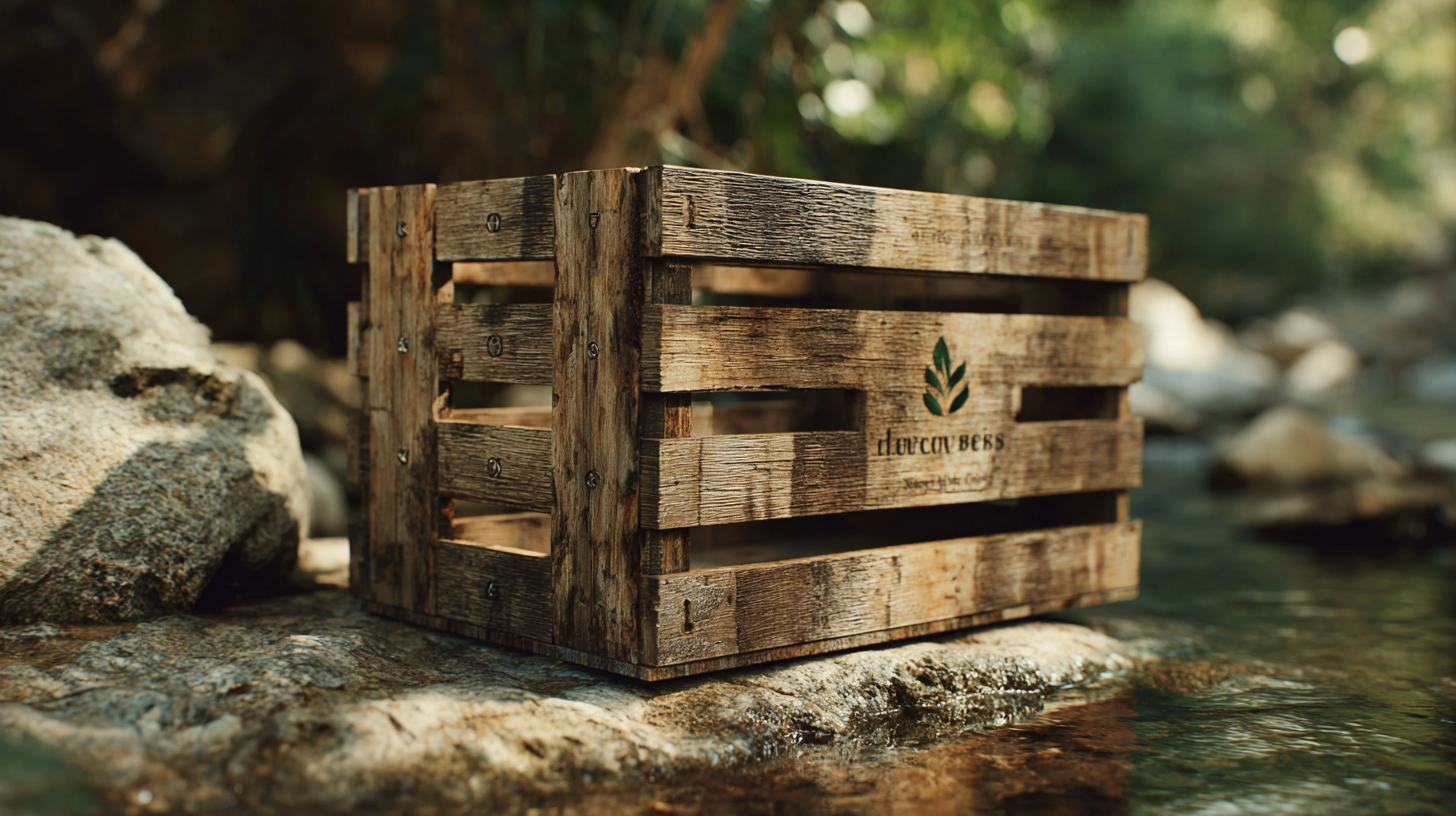


As the world increasingly prioritizes sustainability, innovations in packaging solutions are evolving to meet eco-friendly demands. One notable advancement is the rise of Hollow Board Boxes, an alternative that significantly reduces environmental impact compared to traditional materials. According to a 2022 report by Smithers Pira, the global market for sustainable packaging is projected to exceed $500 billion by 2027, highlighting the growing consumer preference for eco-conscious products. Hollow Board Boxes are gaining traction due to their lightweight, durable properties and the ability to be made from recyclable materials. These boxes not only provide reliable protection for a variety of goods but also align with the global shift towards reducing plastic waste and promoting a circular economy. As businesses and consumers become more aware of the environmental consequences of packaging waste, the future of Hollow Board Boxes presents a promising opportunity for sustainable innovation in the packaging industry.

The production of eco-friendly hollow board boxes, while promising for sustainable practices, encounters several challenges that can hinder progress. One primary issue is the sourcing of materials. Many eco-friendly alternatives lack the durability and performance characteristics of traditional materials, making it essential to ensure that the substitute materials not only meet environmental standards but also offer the necessary strength and functionality. This often requires extensive research and development, which can be time-consuming and costly for manufacturers.
Additionally, the technology required for creating hollow board boxes with eco-friendly materials is still in its infancy. Manufacturers may face obstacles related to the efficiency of production processes and the scalability of new technologies. Training workers to use these innovative materials can also pose a challenge, as new techniques and practices must be adopted to maintain product quality while minimizing environmental impact. Ensuring that the entire supply chain embraces sustainable practices is crucial, as any weak link can compromise the overall effectiveness of eco-friendly innovations in packaging.
As businesses increasingly prioritize sustainability, innovative materials are at the forefront of eco-friendly packaging solutions, particularly in the production of hollow board boxes. These innovative materials not only reduce environmental impact but also enhance the functionality and durability of packaging. For instance, the use of recycled plastics and sustainable wood products in hollow board boxes minimizes waste and lowers carbon footprints. The implementation of such materials ensures that the packaging can be recycled or repurposed, allowing for a circular economy that benefits both the planet and the economy.

Moreover, advancements in biodegradable composites are revolutionizing the packaging industry. These materials, made from natural resources, decompose more quickly than traditional plastics, offering a viable solution for reducing landfill waste. Manufacturers are exploring combinations of plant-based fibers and bioplastics, resulting in hollow board boxes that maintain strength while prioritizing eco-friendliness. As consumer demand shifts towards greener products, the development and adoption of these innovative materials will play a crucial role in shaping the future of packaging, making it more sustainable while still meeting industry standards for performance and protection.
As consumer awareness of environmental issues intensifies, the demand for eco-friendly packaging solutions continues to rise. Recent reports highlight that the biodegradable films market is projected to reach USD 2.3 billion by 2032, demonstrating a robust growth trajectory fueled by the shift in consumer priorities towards sustainability. This growing consciousness is not confined to a single region; it echoes globally, affecting various industries by prompting a significant transformation in packaging materials and strategies.
The U.S. packaging industry is experiencing a pivotal shift, with retailers pushing for sustainable options to meet consumer demand. With expectations for the sustainable plastic packaging market to surpass USD 174.4 billion by 2034, it’s clear that businesses are recognizing the importance of adopting eco-friendly practices. Moreover, the global cellulose film packaging market is anticipated to surpass USD 1.36 billion by 2035, driven largely by the increasing preference for sustainable materials among consumers. This momentum reveals that packaging designs are evolving, with a focus on sustainability at their core, ensuring that eco-friendly innovations will play a crucial role in the future of packaging.
The development of eco-friendly innovations in hollow board boxes is significantly influenced by regulatory policies aimed at promoting sustainability. Governments worldwide are implementing stricter regulations on packaging materials, emphasizing the need for recyclable and biodegradable options. These policies not only encourage manufacturers to rethink their materials but also incentivize investment in research and development for sustainable solutions. Compliance with these regulations can lead to a competitive advantage in the marketplace, driving companies to innovate in the creation of eco-friendly alternatives that meet customer demands.
Furthermore, the impact of regulatory frameworks extends beyond mere compliance; they can shape industry standards and consumer expectations. As consumers become more environmentally conscious, brands that prioritize eco-friendly practices are likely to gain favor, leading them to seek hollow board boxes made from sustainable sources. Such innovations not only reduce the carbon footprint but also promote a circular economy where materials are reused and repurposed. Consequently, regulatory pressures can catalyze a shift towards greener practices, propelling the eco-friendly packaging sector into a prominent position within the broader sustainability movement.
| Innovation Type | Description | Regulatory Policy Impact | Current Adoption Rate (%) | Projected Growth (2024-2026) |
|---|---|---|---|---|
| Biodegradable Materials | Use of materials that break down naturally. | Increased regulations on plastic use. | 45% | 25% |
| Recyclable Materials | Development of packaging that can be recycled. | Supportive policies encouraging recycling efforts. | 60% | 30% |
| Energy-Efficient Production | Processes that reduce energy consumption. | Regulations promoting energy efficiency. | 35% | 40% |
| Innovation in Design | Design enhancements that optimize material use. | Compliance with eco-design guidelines. | 50% | 35% |
| Smart Packaging | Packaging that provides real-time data feedback. | Incentives for implementing technology in packaging. | 25% | 50% |
As businesses and consumers increasingly prioritize sustainability, the future of hollow board boxes is poised for innovation. These eco-friendly packaging solutions are gaining traction due to their versatility and recyclability. As 2023 progresses, trends indicate a notable shift towards materials that minimize environmental impact. More manufacturers are investing in biodegradable and recyclable materials, which not only appeal to eco-conscious consumers but also meet stricter regulatory standards.

In addition to material advancements, technology is playing a crucial role in the evolution of hollow board boxes. Companies are adopting smart packaging solutions that incorporate IoT features, allowing for real-time tracking and better inventory management. This combination of sustainability and technology not only enhances operational efficiency but also reduces waste. As businesses look to optimize their supply chains, eco-friendly hollow board boxes are expected to become a staple in sustainable packaging strategies, meeting both environmental goals and consumer demands for responsible choices.